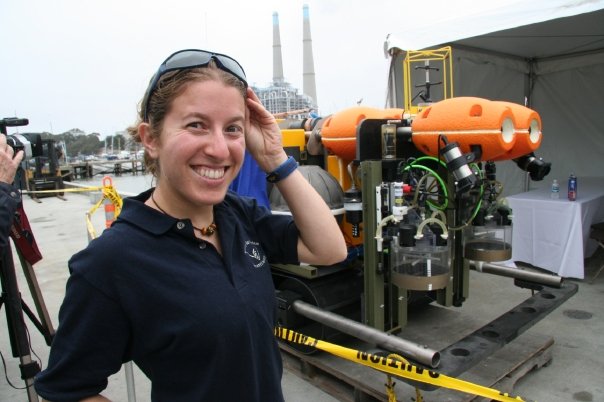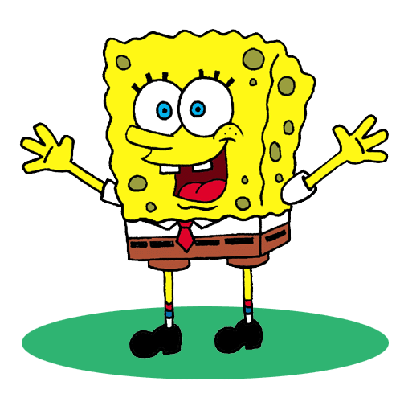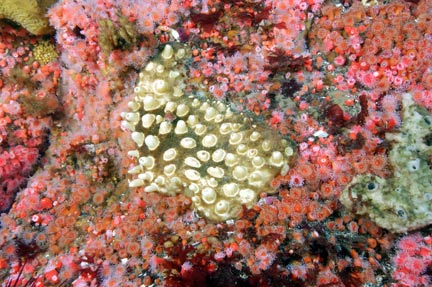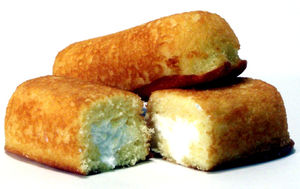
by Amanda Kahn, Invertebrate Zoology and Molecular Ecology Lab
I’d like to introduce you to my favorite organism! I’m studying these critters for my thesis project, and I think they are one of the weirdest critters in the ocean. Let me explain why they’re so cool, first of all:
This organism lives in all places where there is water: bays, harbors, freshwater lakes, coastal environments, and the deep ocean. It eats microscopic particles out of the water, yet can grow so large, a person could fit inside of it! To find its microscopic food, it sifts through microscopic particles one by one, to find the edible bits with up to 95% efficiency! As if that’s not cool enough, this organism is the star of a popular cartoon, is present in many people’s homes, and has a delicious dessert named after it. Wow! Can you figure out what I’m talking about?

I’m sure you knew the answer immediately – I’m talking about sponges! Sponge Bob is, of course, that famous celebrity I mentioned. Before Sponge Bob started airing his TV show, almost no one knew of sponges. I should mention, however, that Sponge Bob is not like your typical sponge – sponges don’t move (much…I’ll post more about that later!), do not talk, do not have eyeballs, and do not live in a pineapple under the sea. Instead, sea sponges (Phylum Porifera) are more similar to the types of sponges you use in your kitchen or bathroom. Sponges are so useful as cleaning supplies in our homes because they soak up water. Live sponges are also good at absorbing the water around them: they have a series of intricate canals, called an aquiferous system, that are lined with feeding cells, called choanocytes. It is through those canals that sponges move water, and sort all of the particles that move along with the water to find the edible bits.
One of the most amazing things about sponges is the way they build and support their aquiferous systems. Sponges have internal skeletons, just like us (as opposed to exoskeletons, like insects have). Unlike us, sponge skeletons are not made of bones – they’re made of either glass or calcium carbonate (the same stuff that seashells are made of). Each “bone” in the sponges’ skeletons is called a spicule, and there are millions and millions of spicules that support a single sponge. I am studying glass sponges (Class Hexactinellida), which build their skeletons out of glass. You might wonder where a sponge would find glass in the ocean, but, surprisingly, the elements that make up glass are quite plentiful in the ocean! Humans make glass by melting sand, and the element that is necessary for glass to be made (silicon, Si) ends up in the ocean from sand and other geological sources. Once the silicon dissolves from the sand into the water, sponges can absorb it as water passes through the aquiferous system.

Before you get worried about tiny glass spicules and throw out all of your bath and kitchen sponges, I should mention that there are a handful of sponge species that do not have any spicules at all. These species are the ones sold as “natural bath sponges,” or “sea sponges,” and are raised in ocean farms (called aquacultures). In addition, most of those colorful pink, blue, or green rectangular sponges you use in your kitchen are not actually sea sponges at all – they are synthetic (man-made)!
I hope you’re now a little more familiar with this phylum. Even though they don’t move much, and definitely aren’t as charismatic as an otter or as brawny as a shark, sponges have some evolutionary traits that I’m sure will knock your socks off! I’ll write more about those amazing traits in future posts, but if you have any specific questions or things you’d like to know about sponges, send me an email or write a comment, and I’ll make sure to focus on your questions in my next posts!

I know I’m not alone in my love of Phylum Porifera – someone else liked sponges so much, they named a dessert after them!

